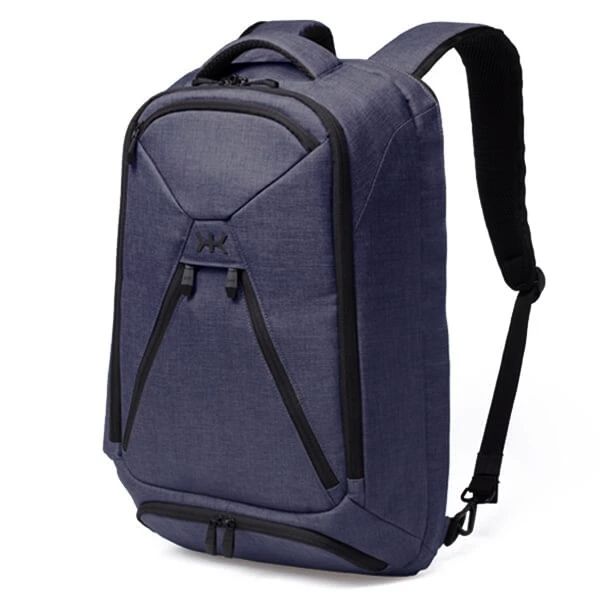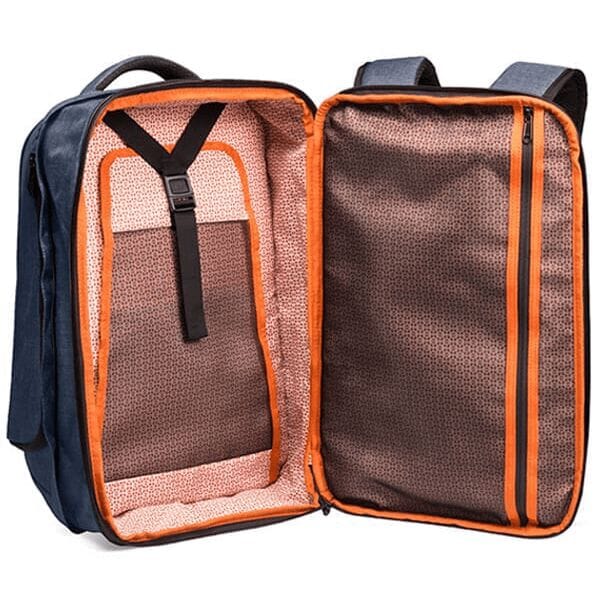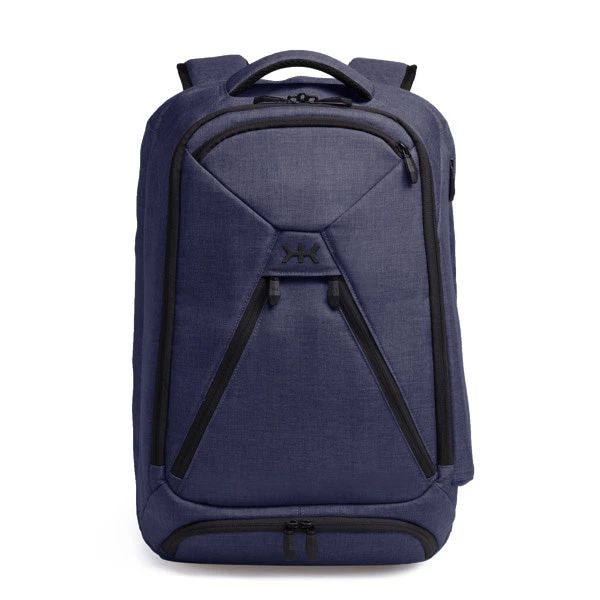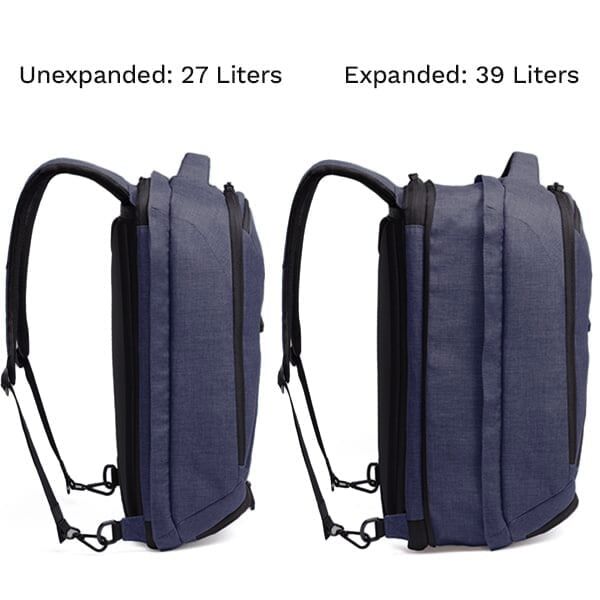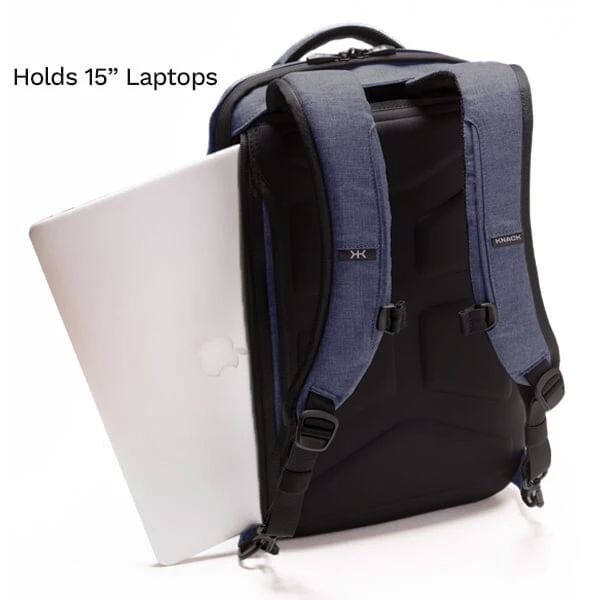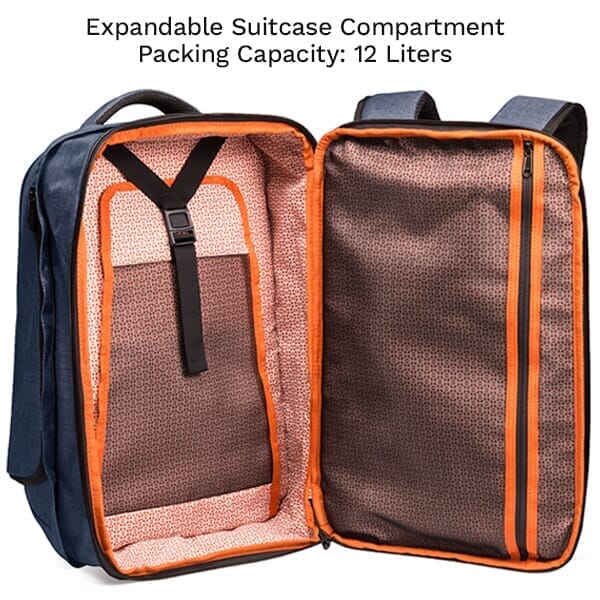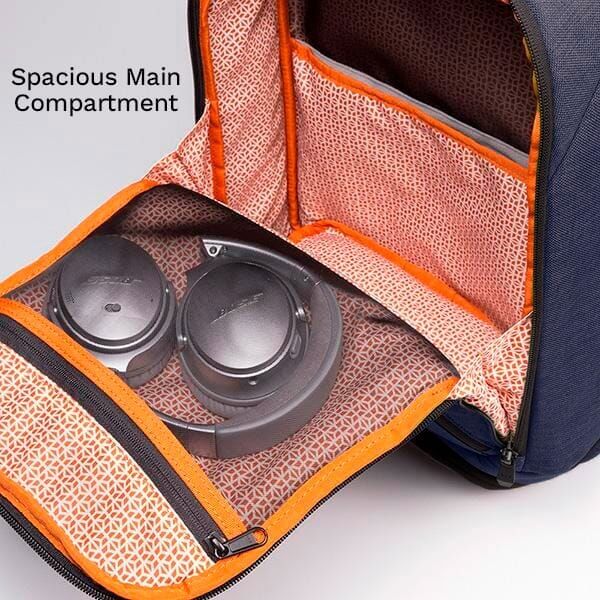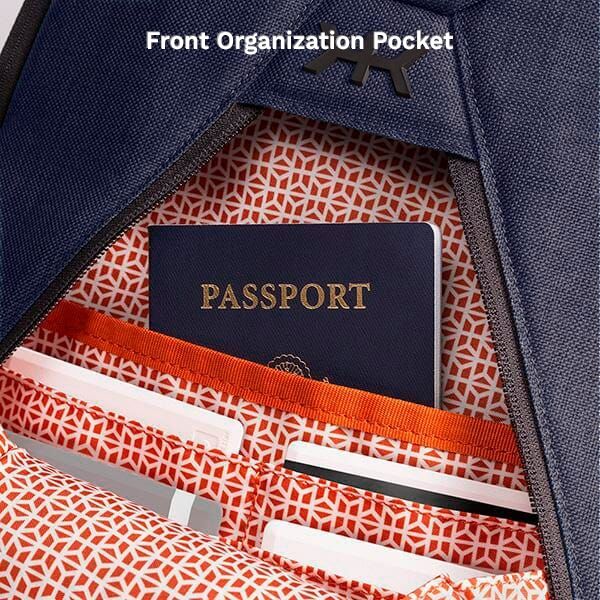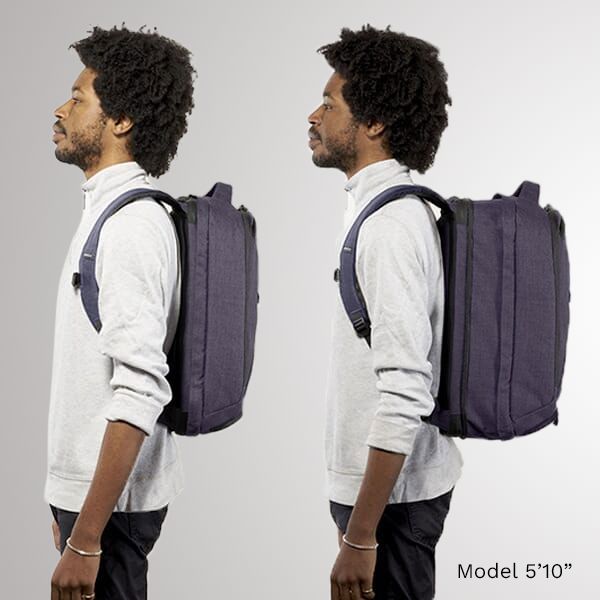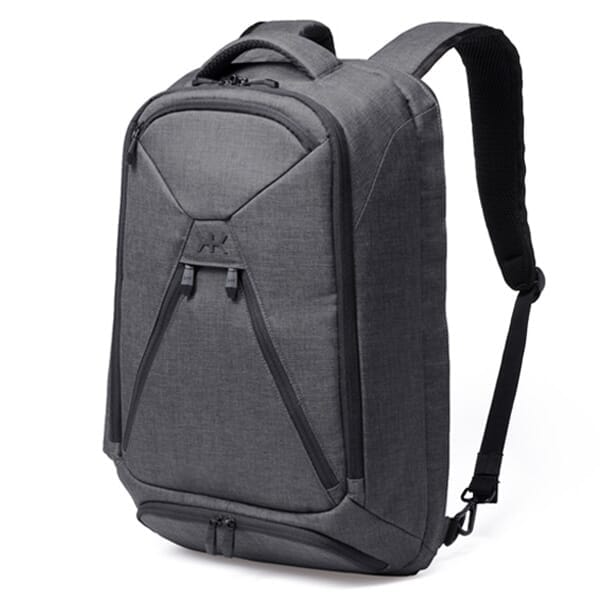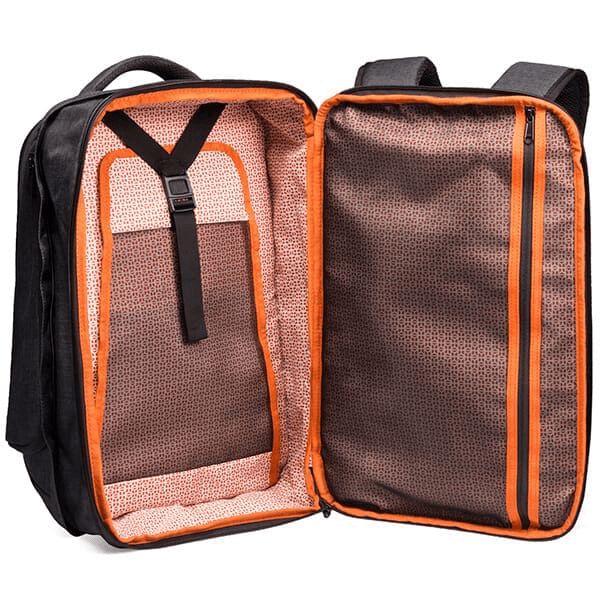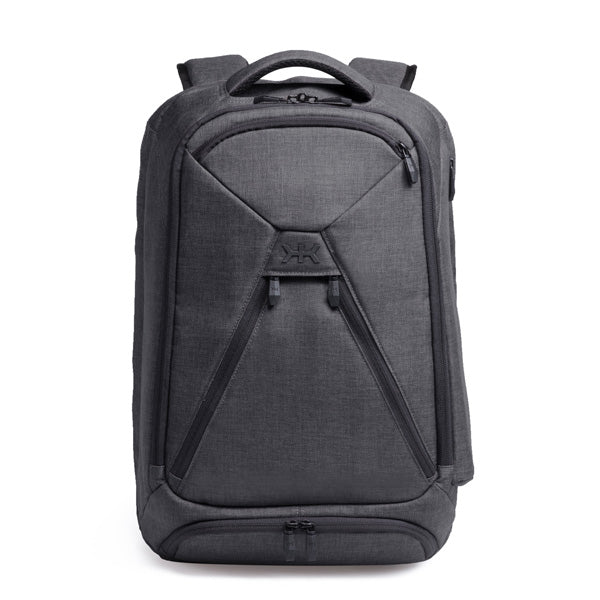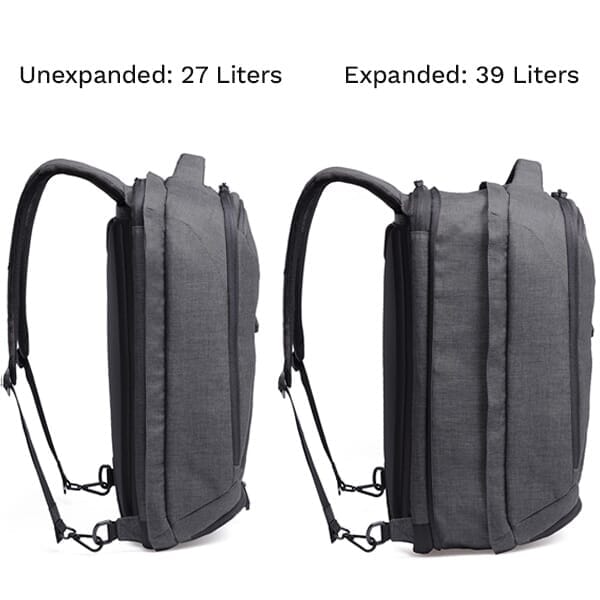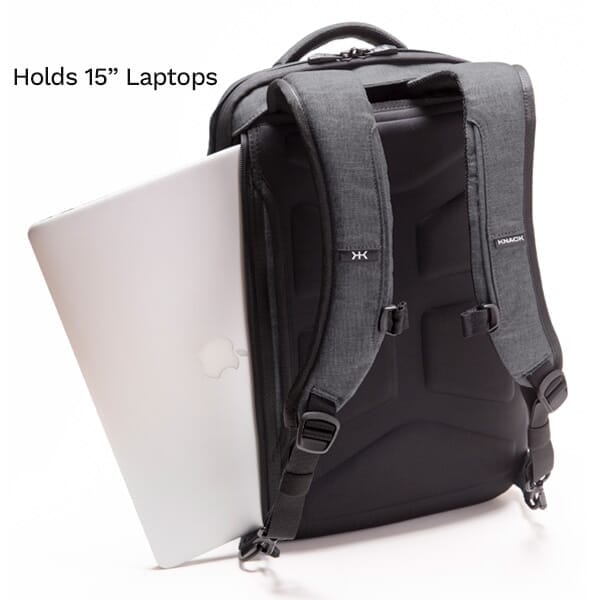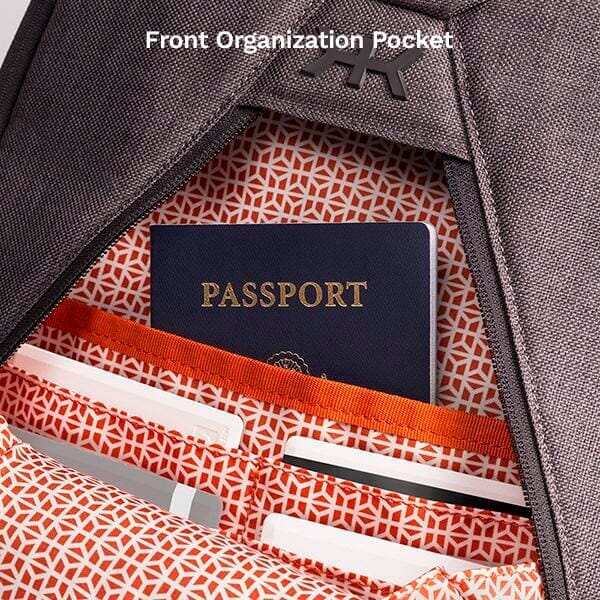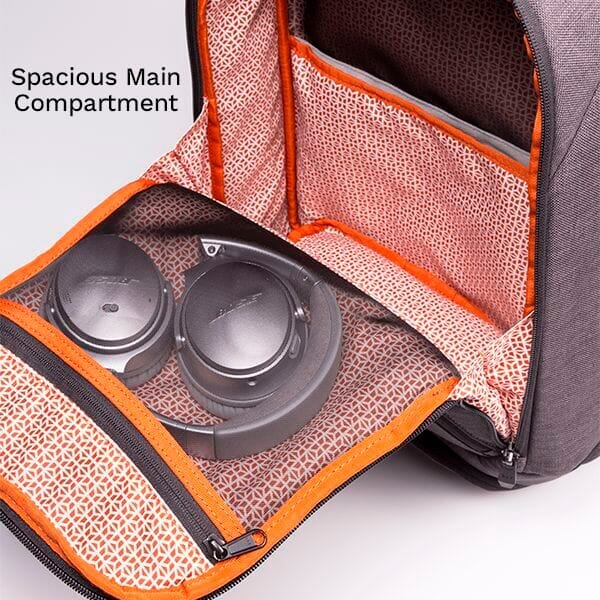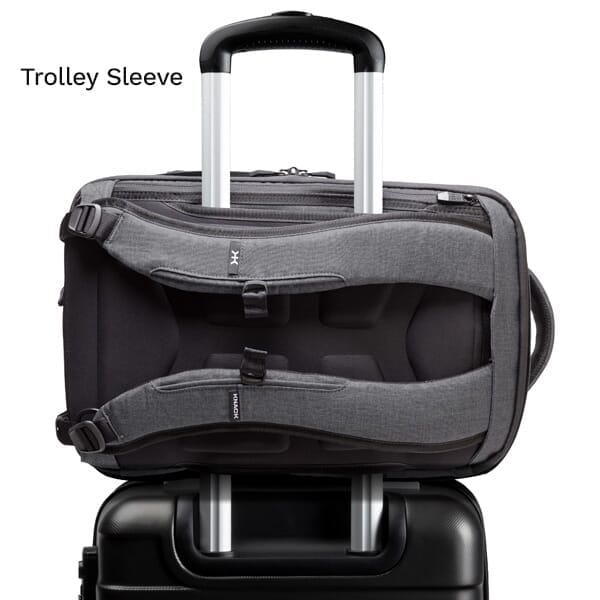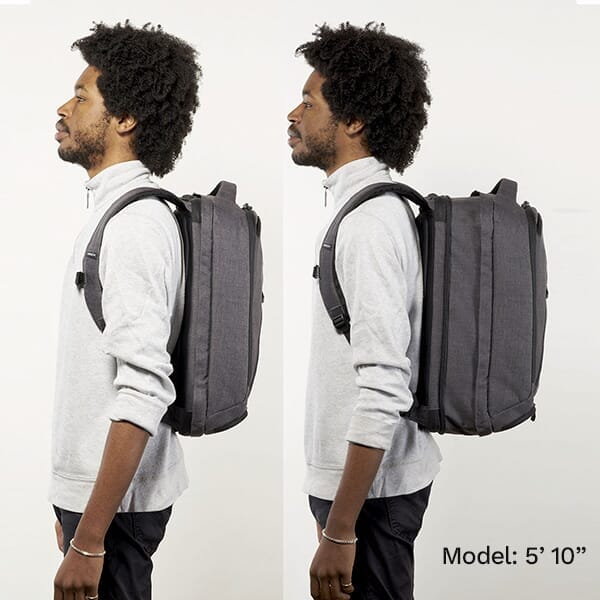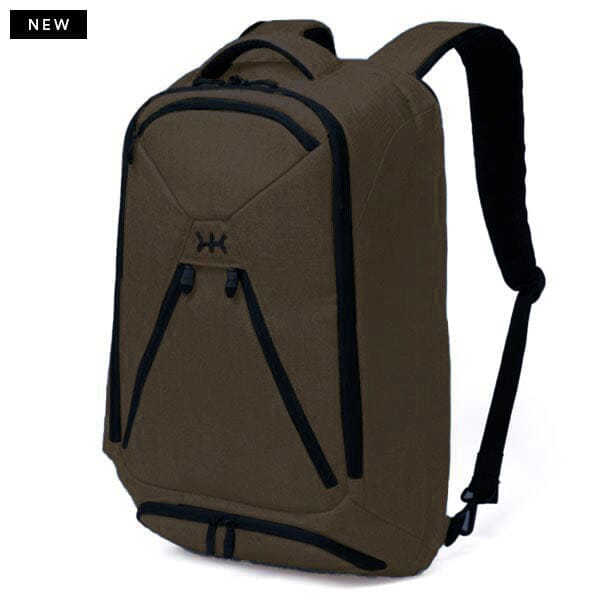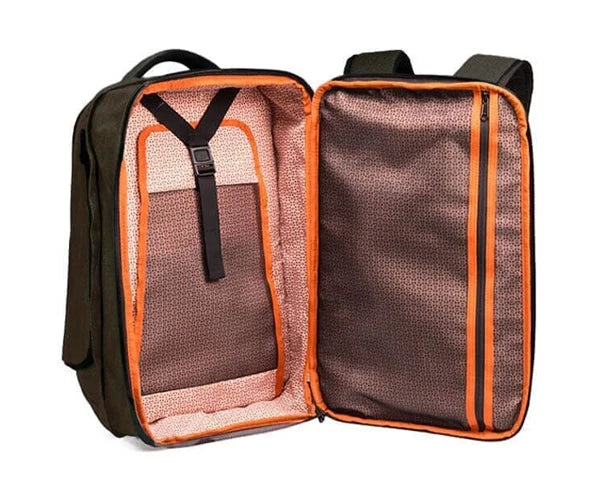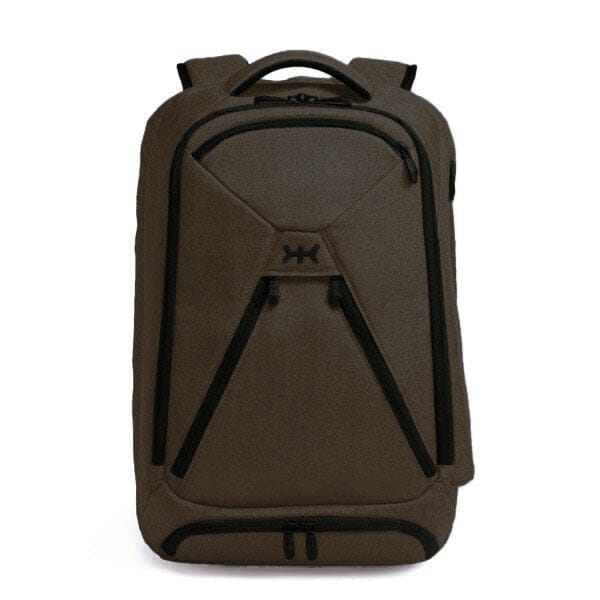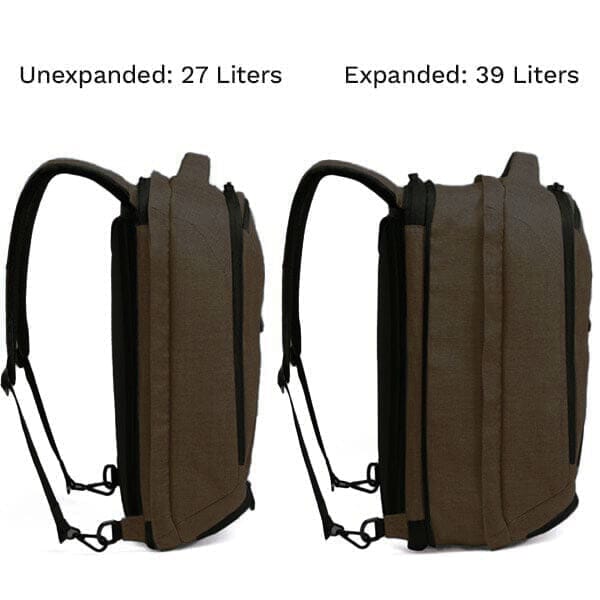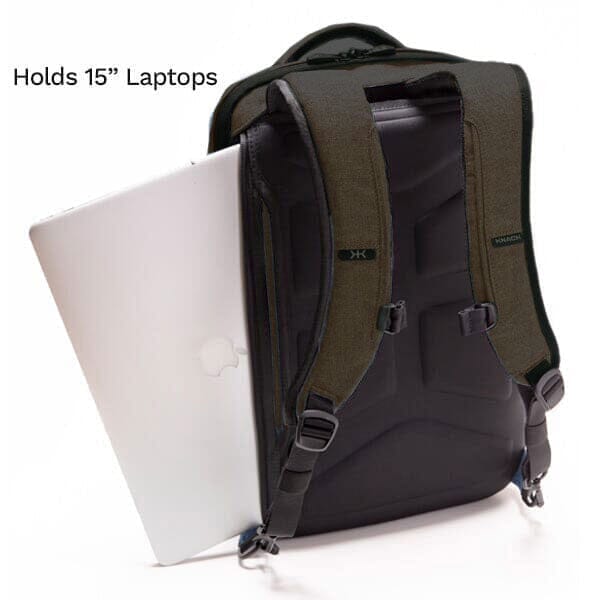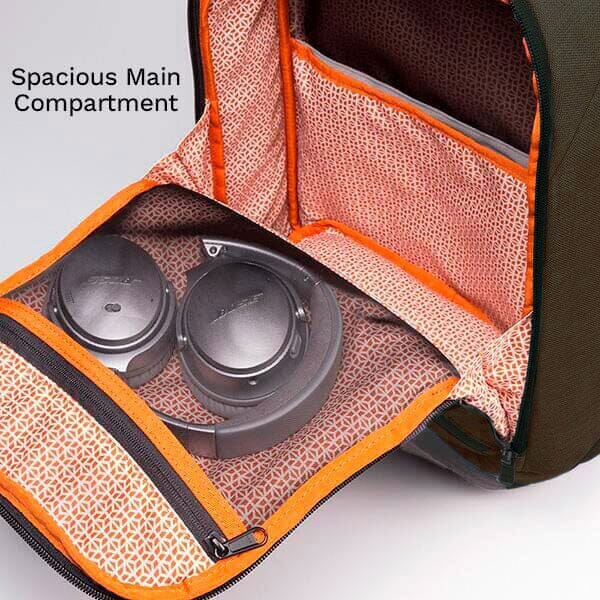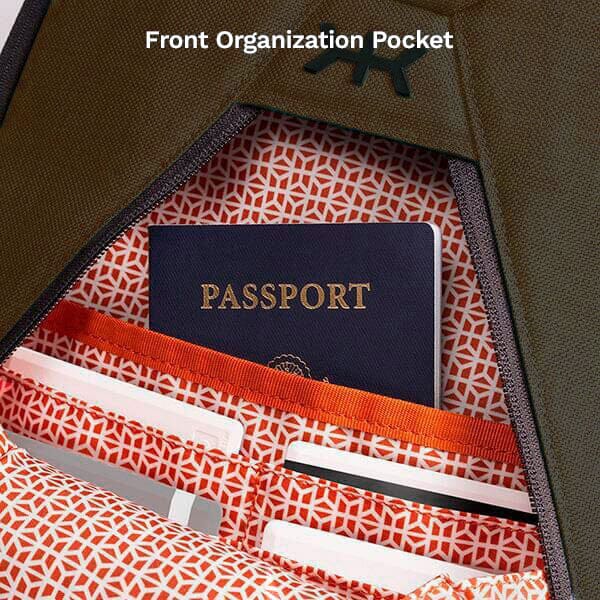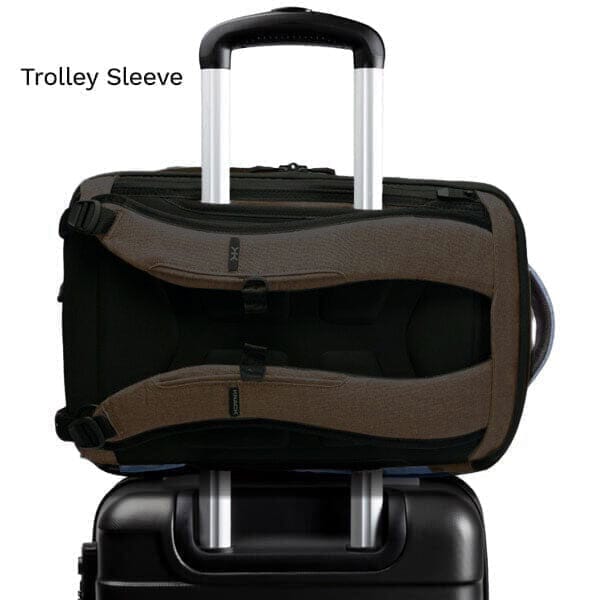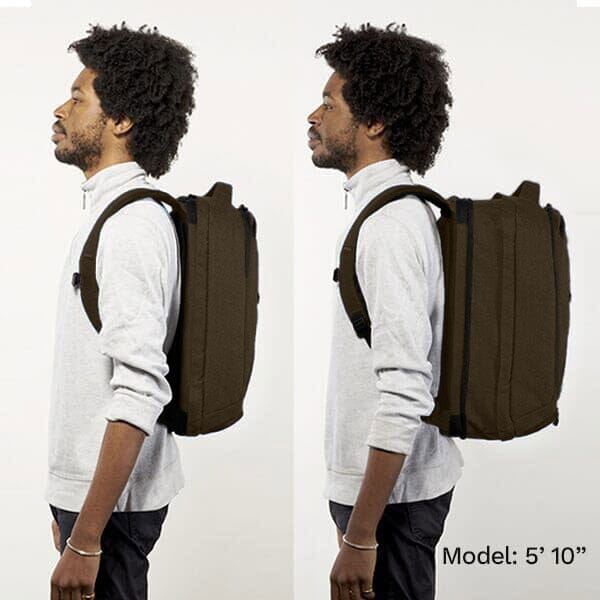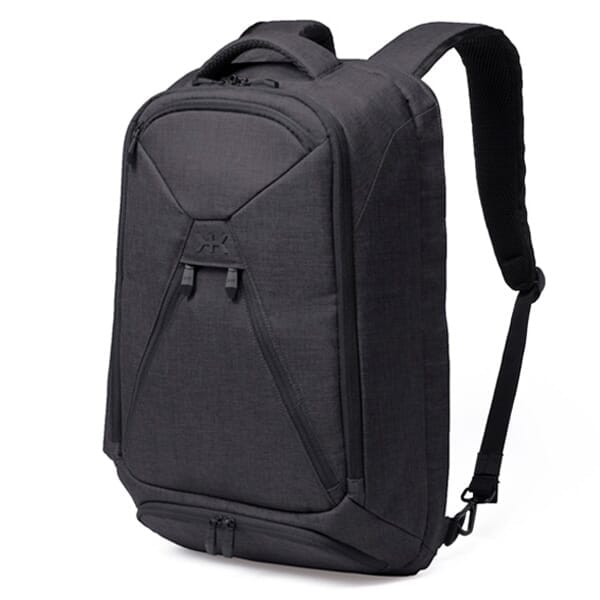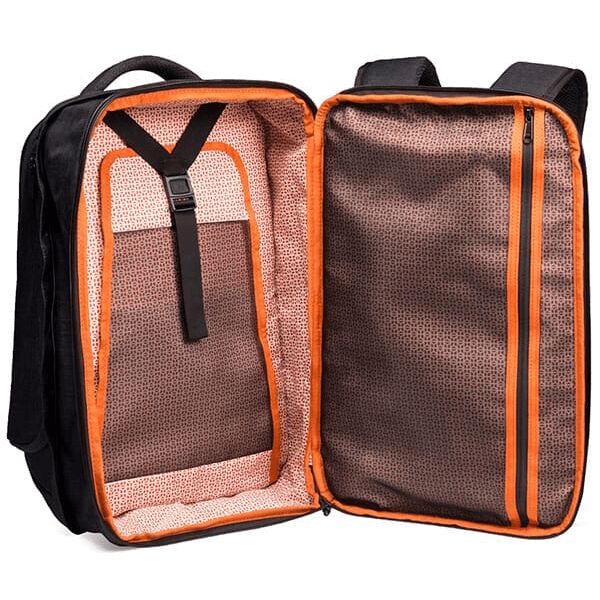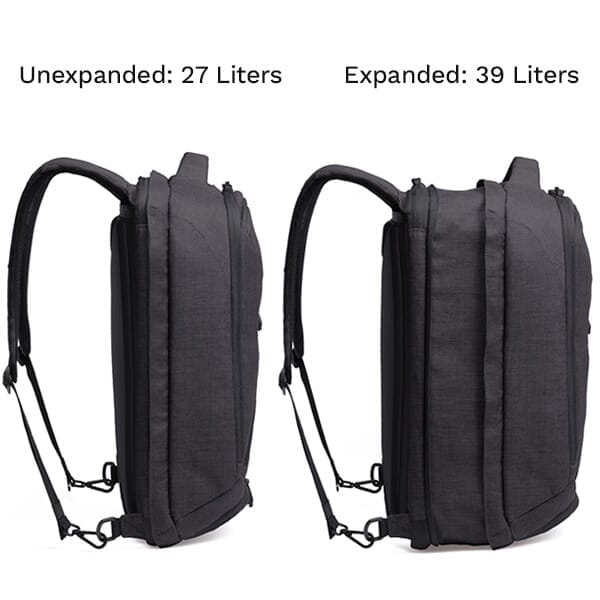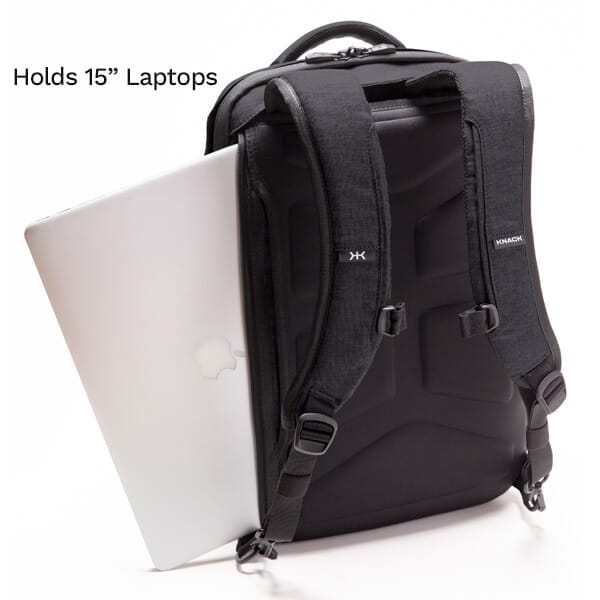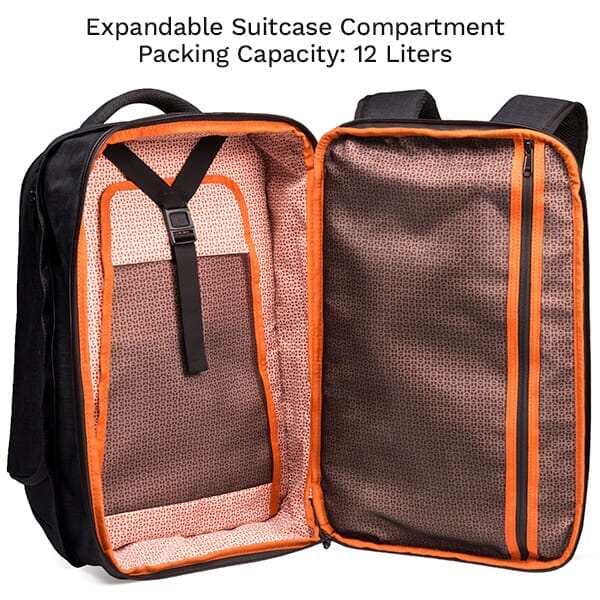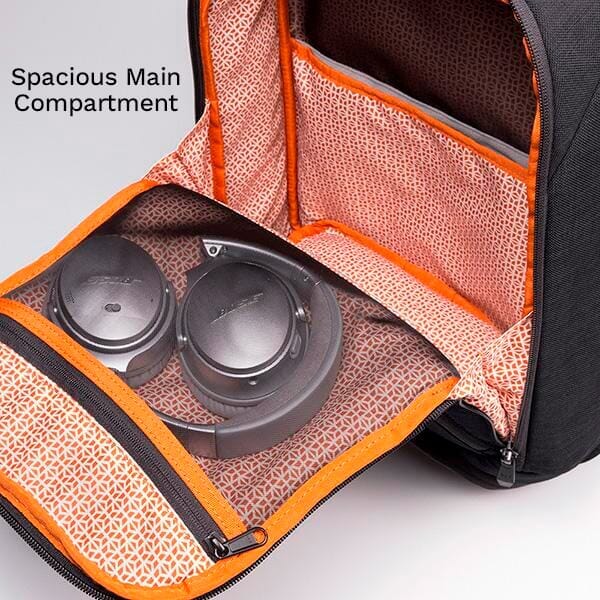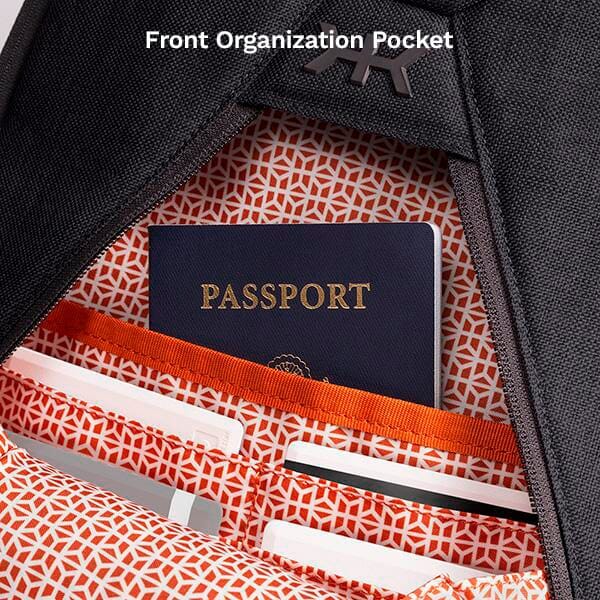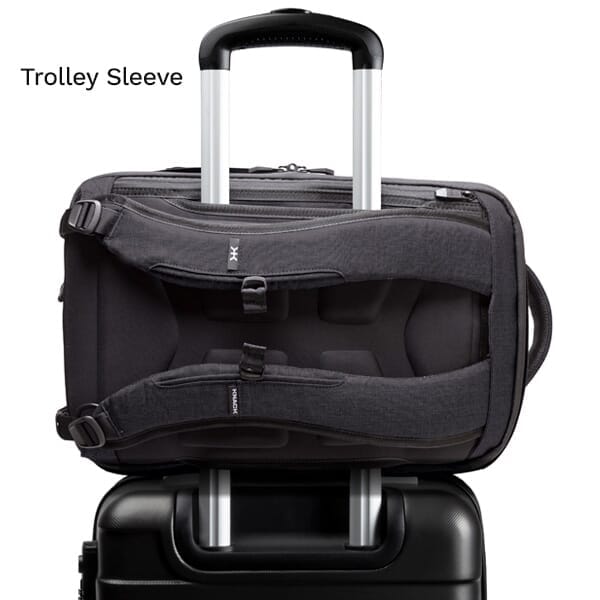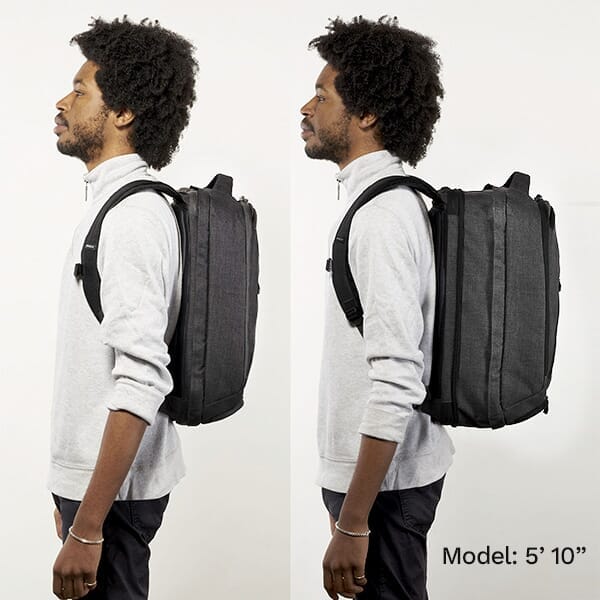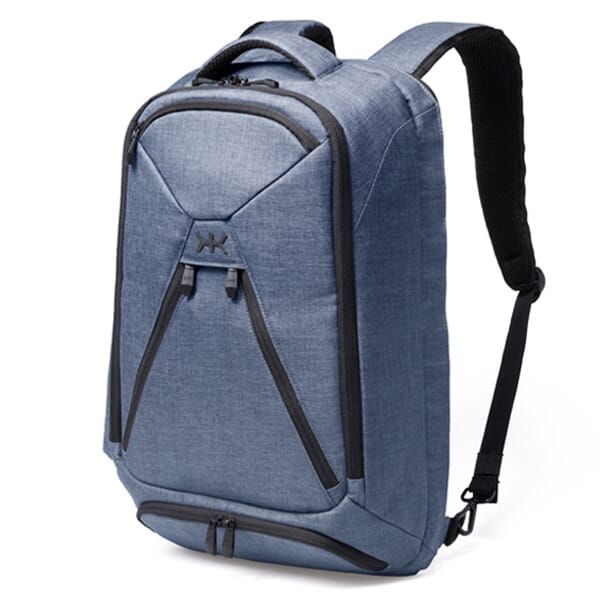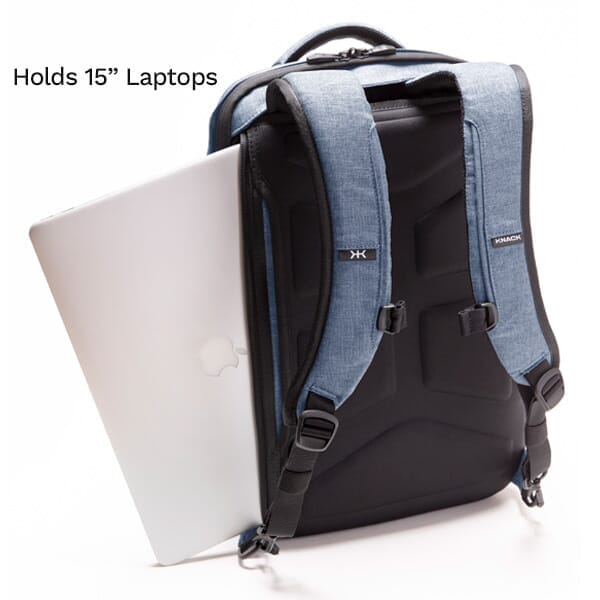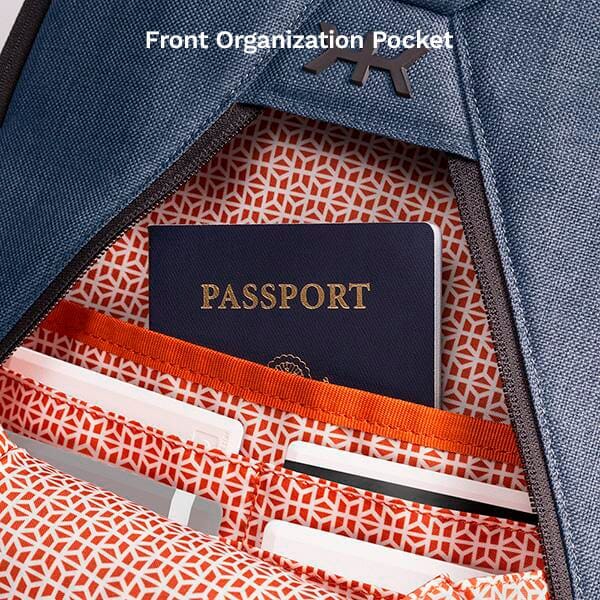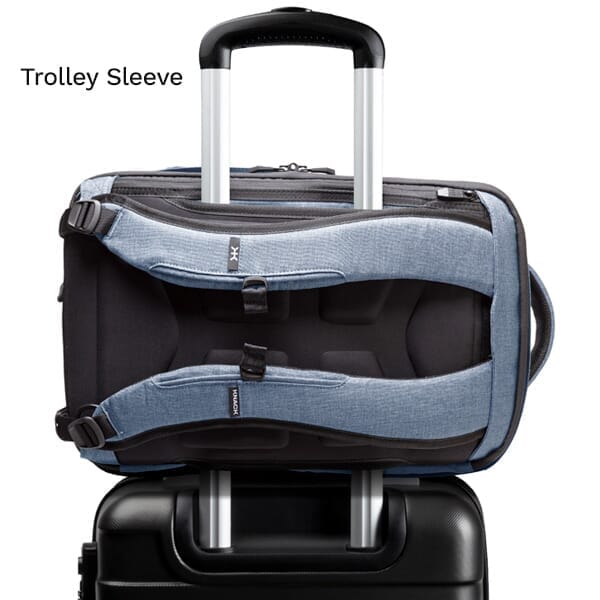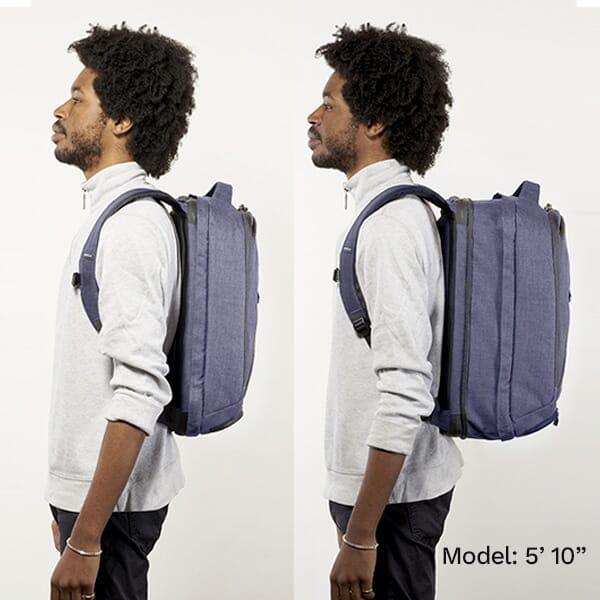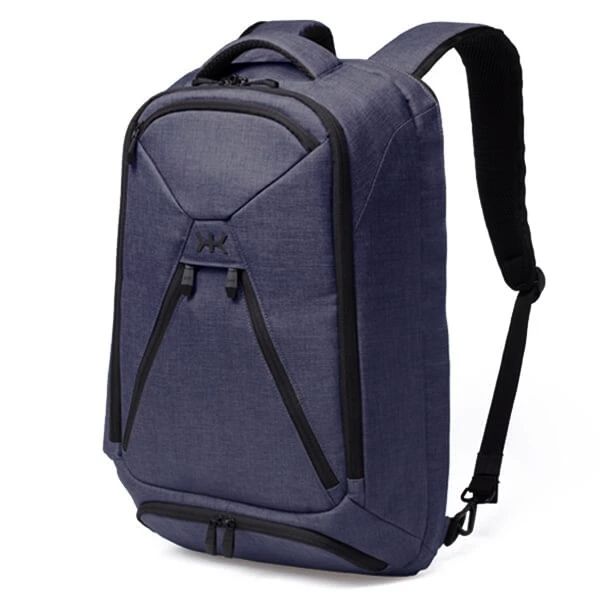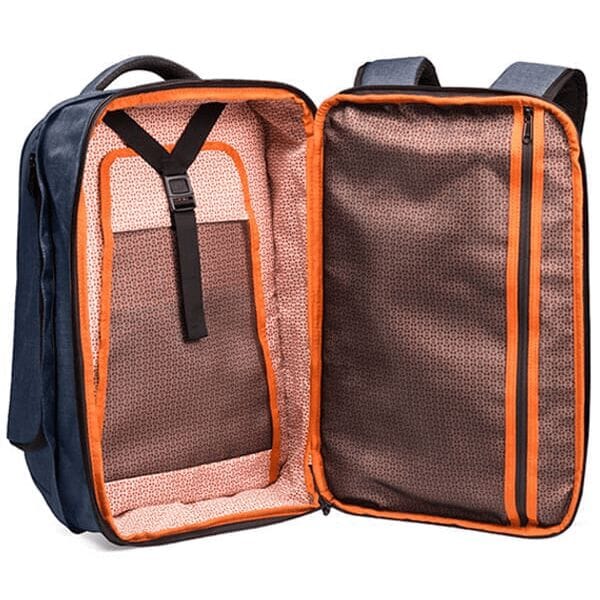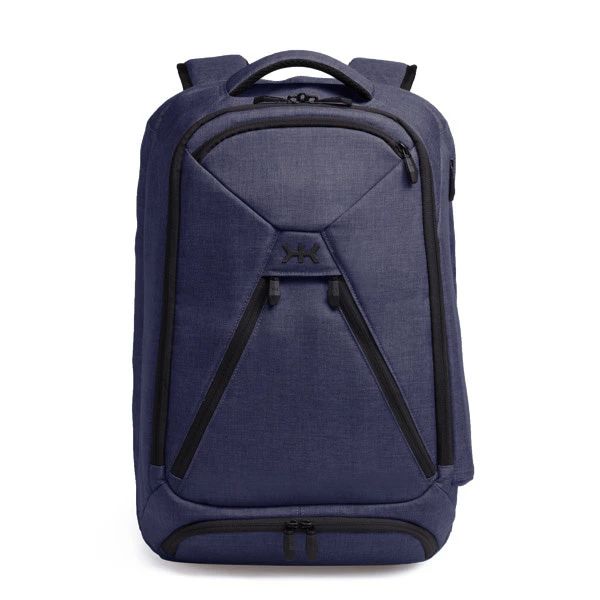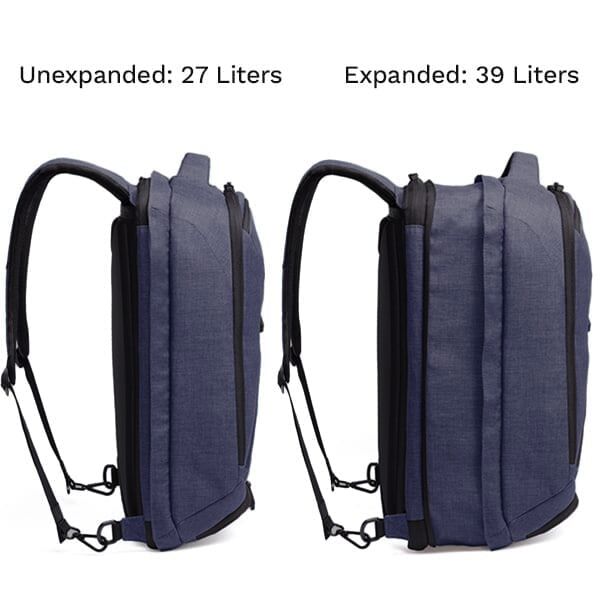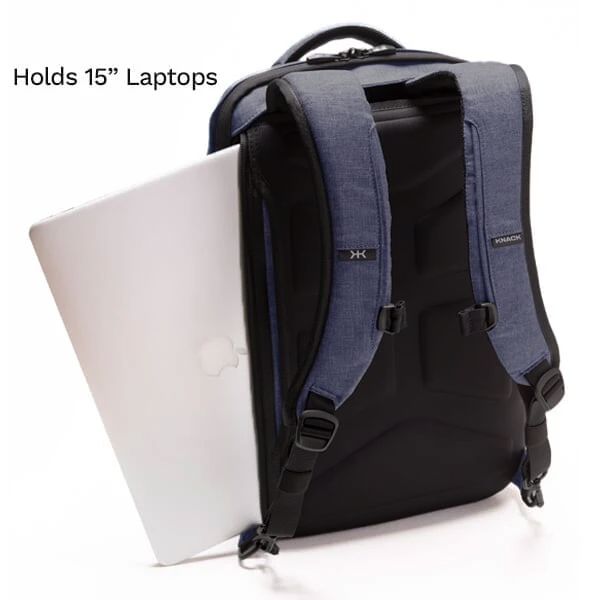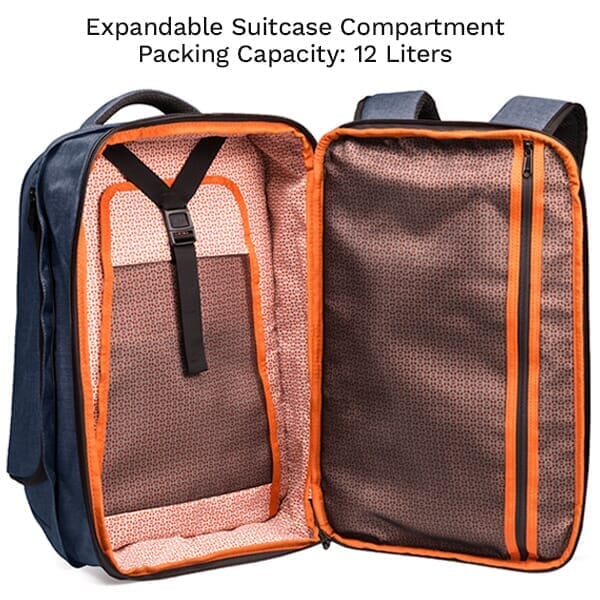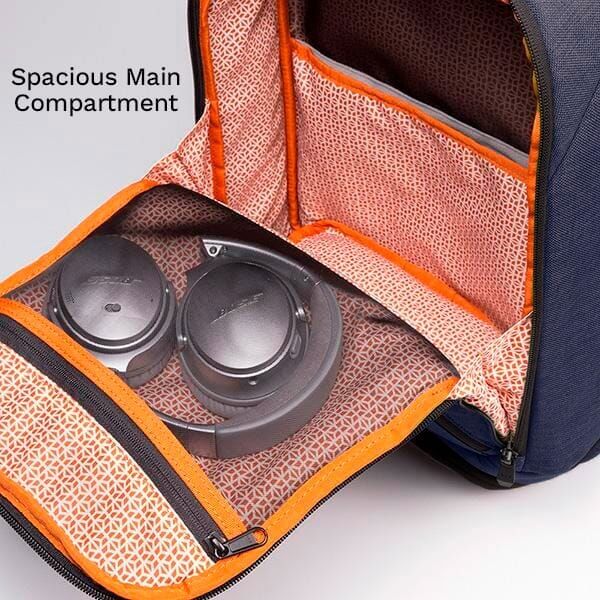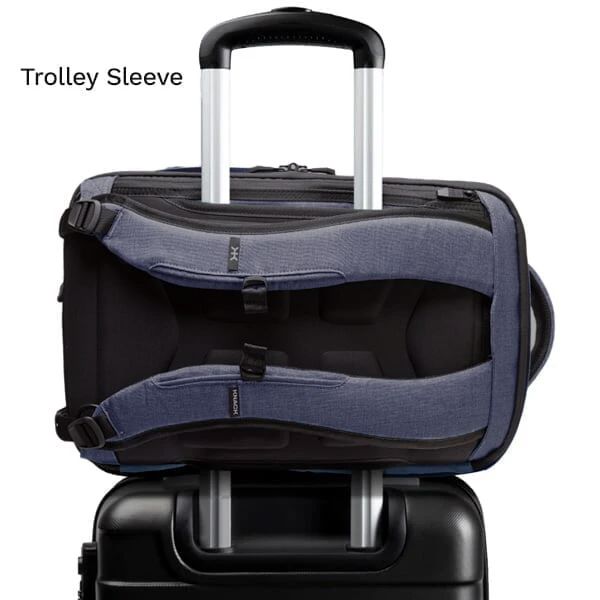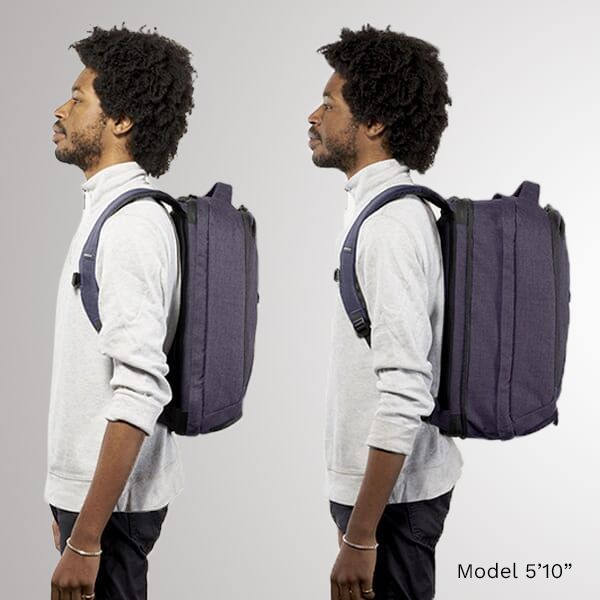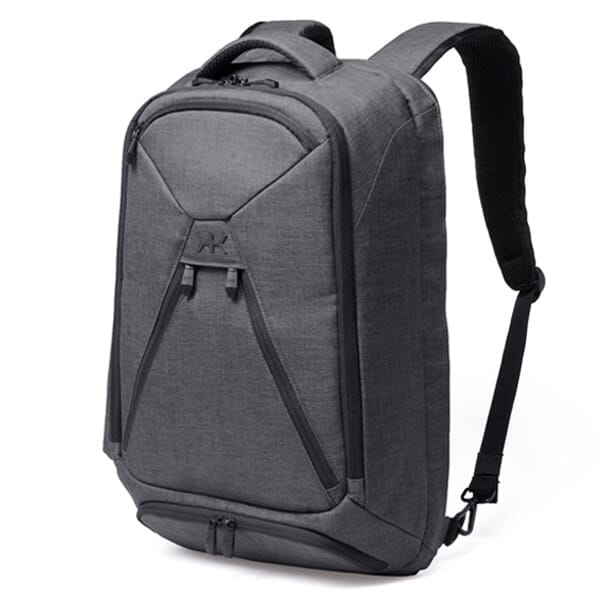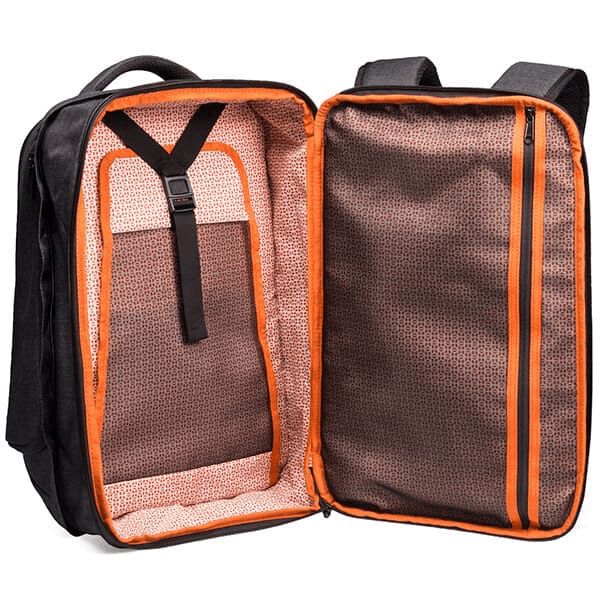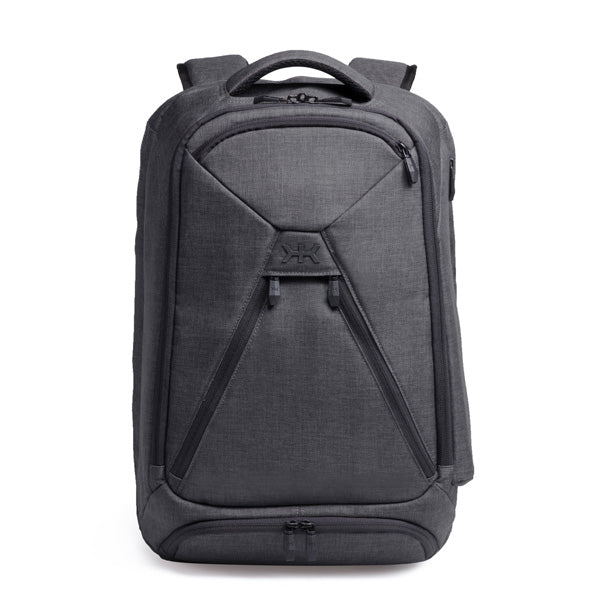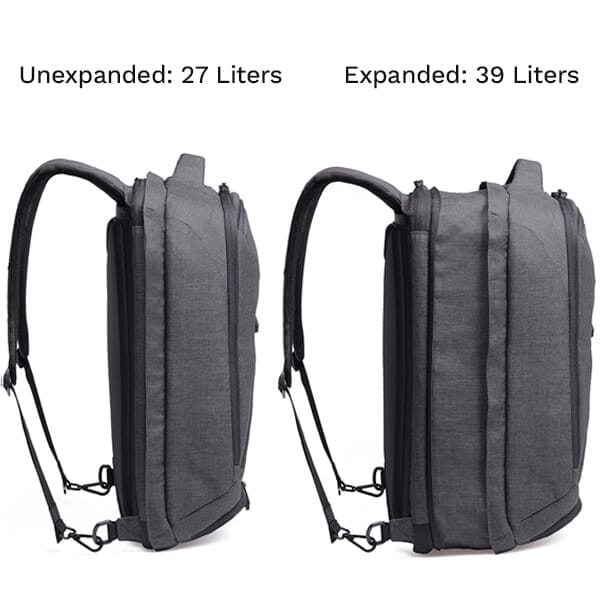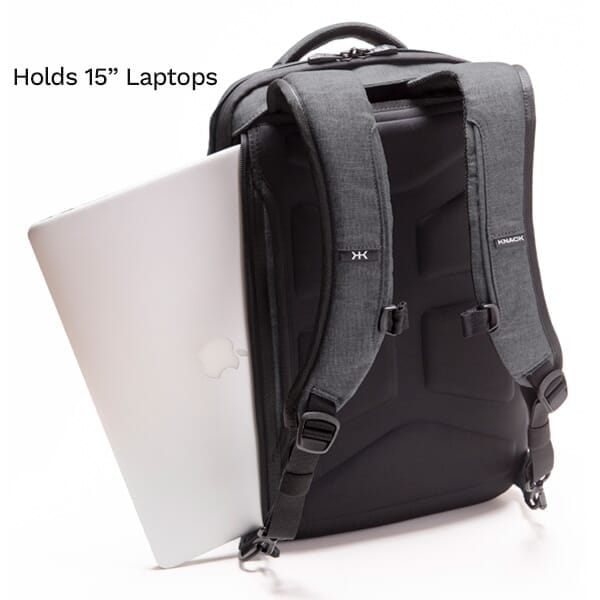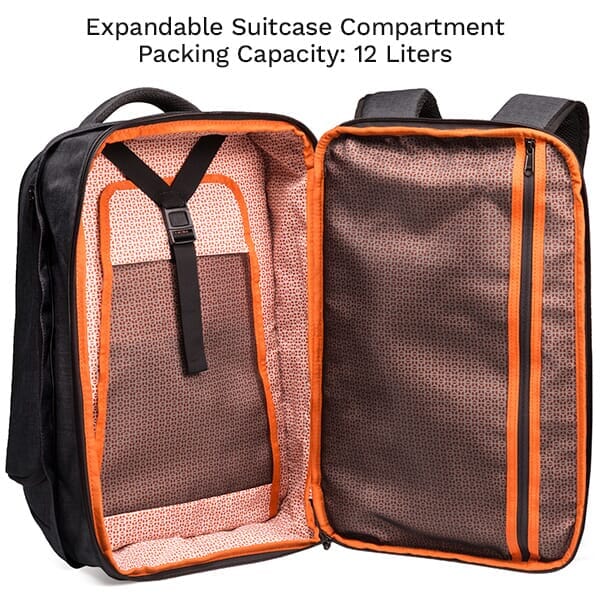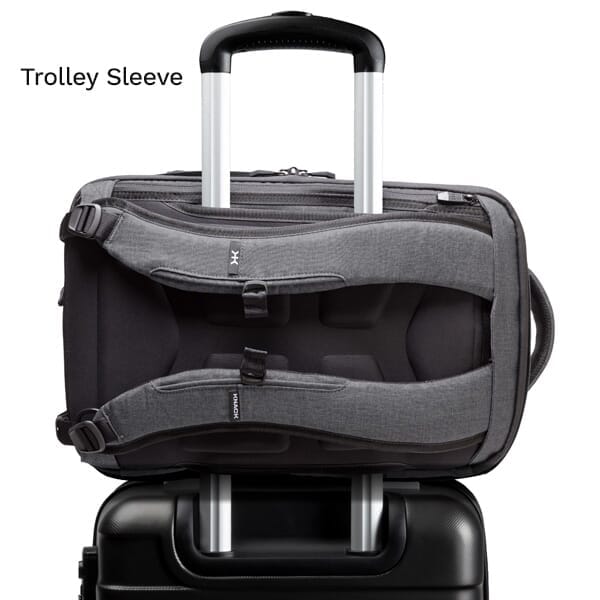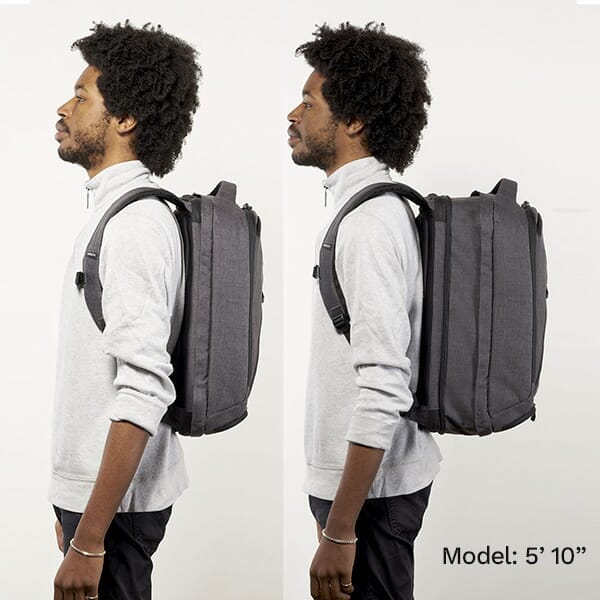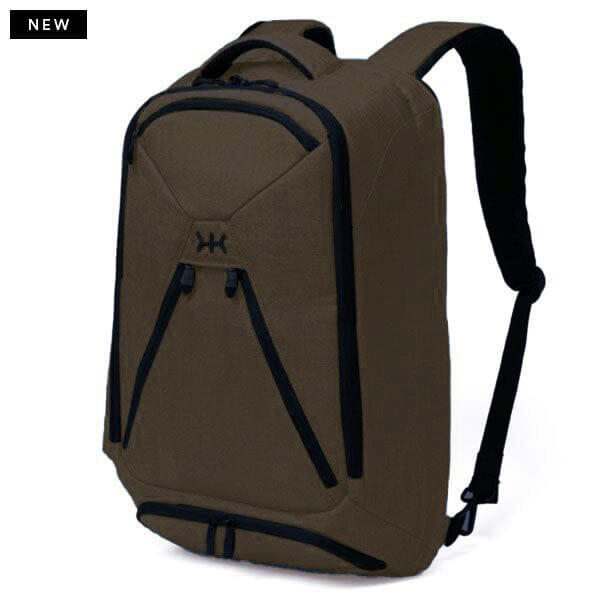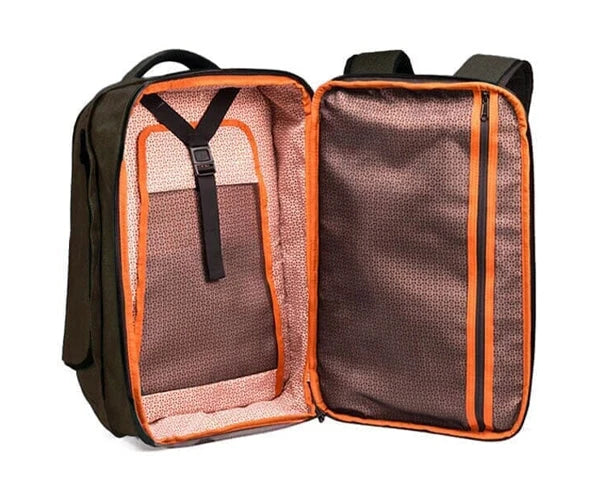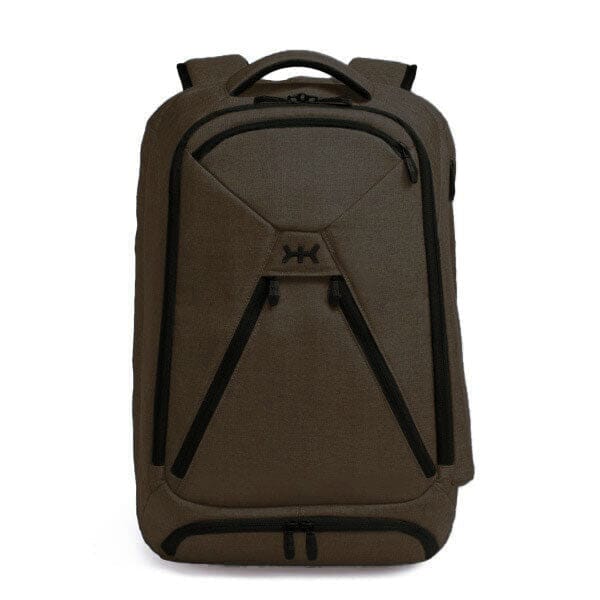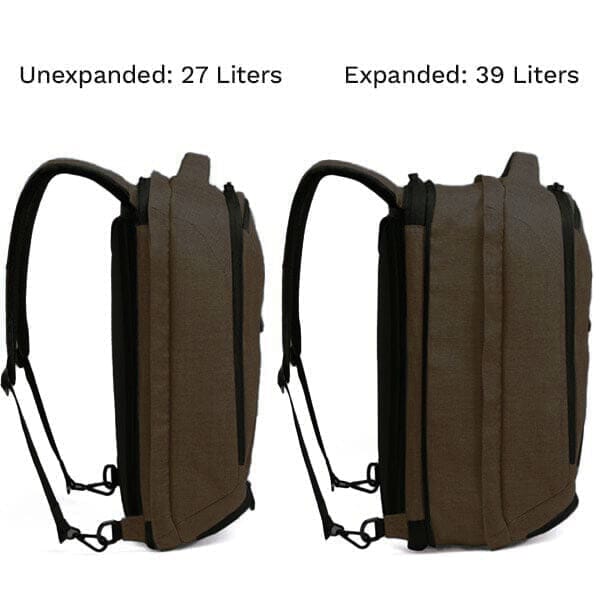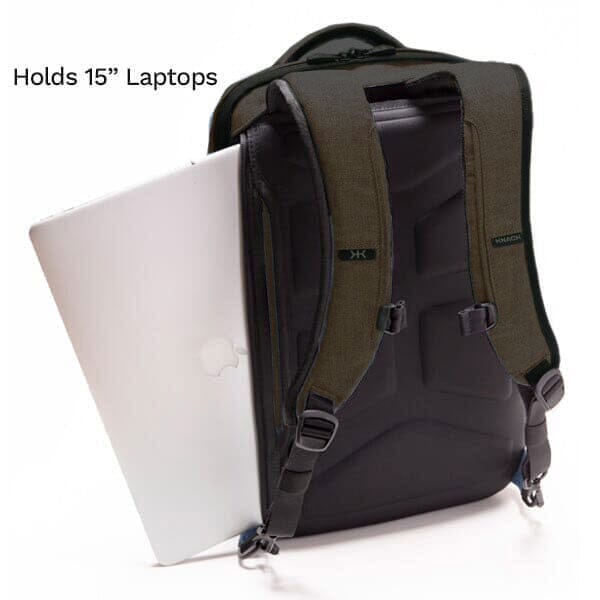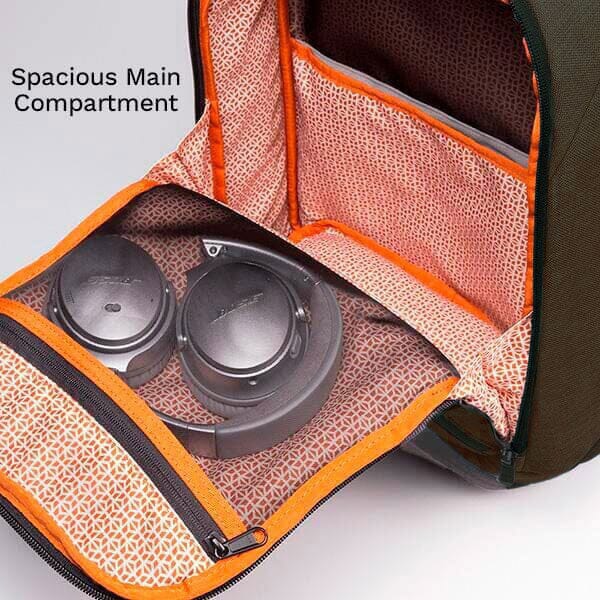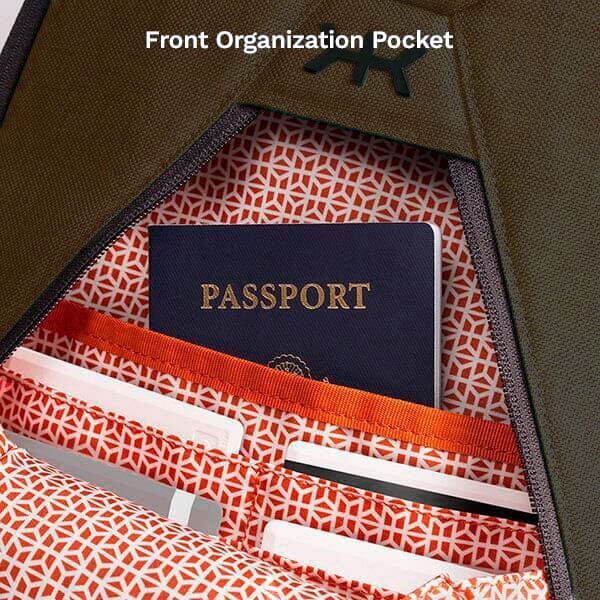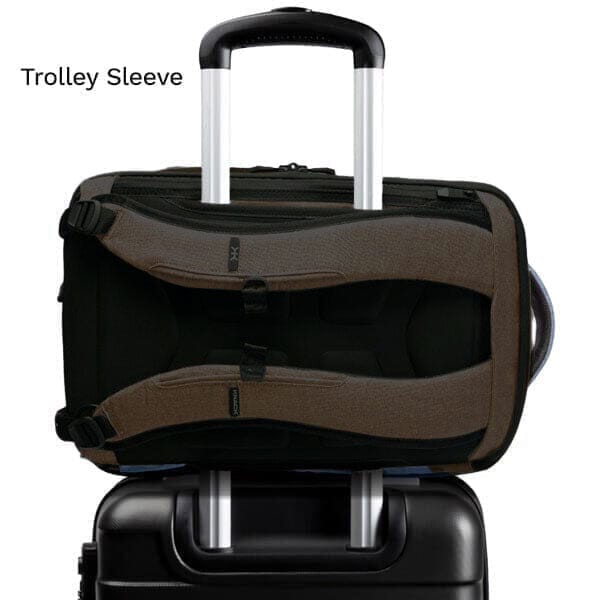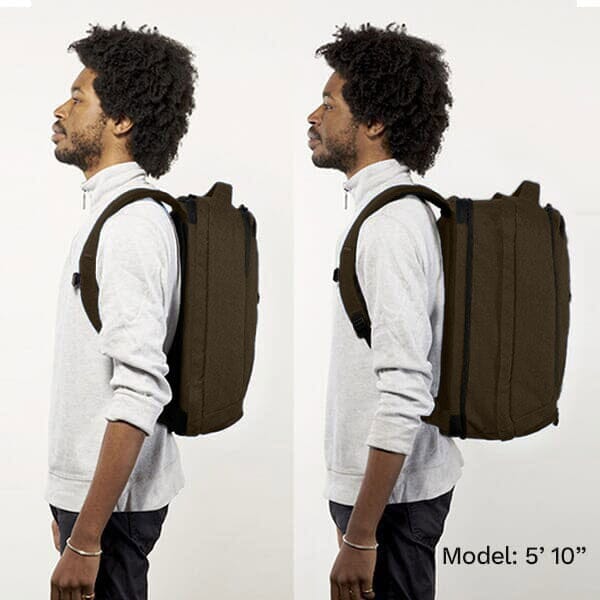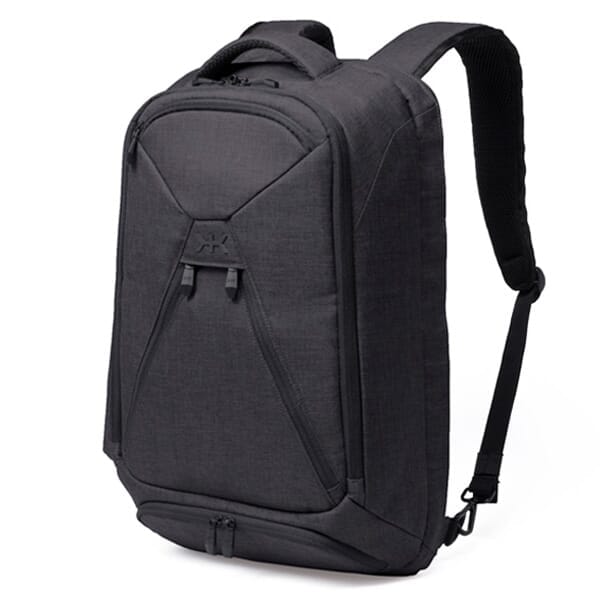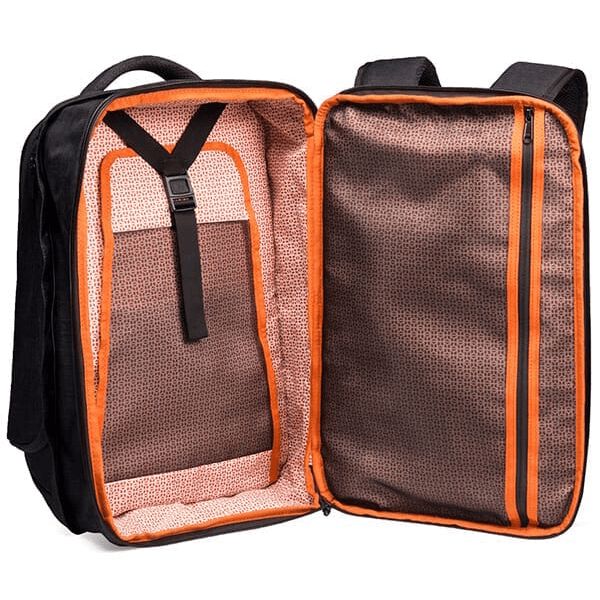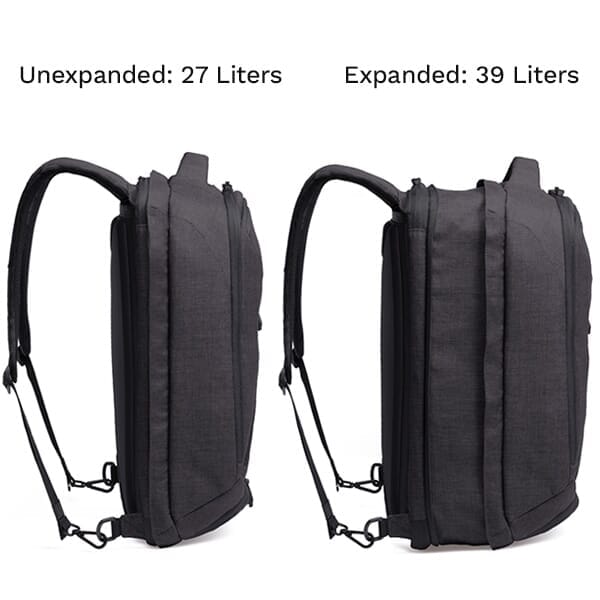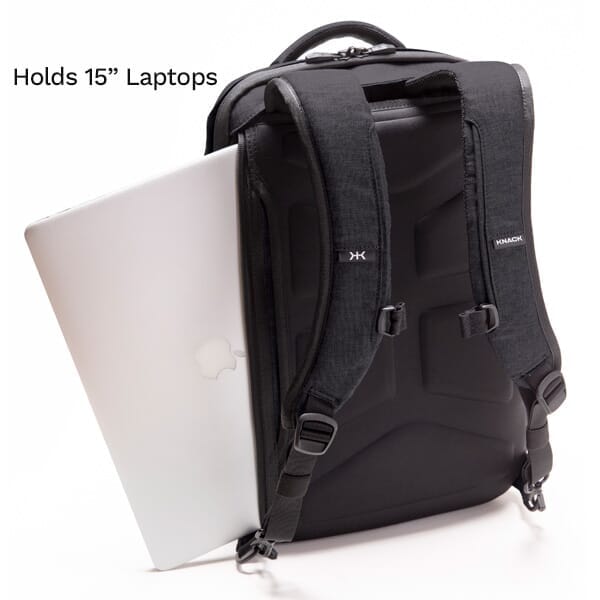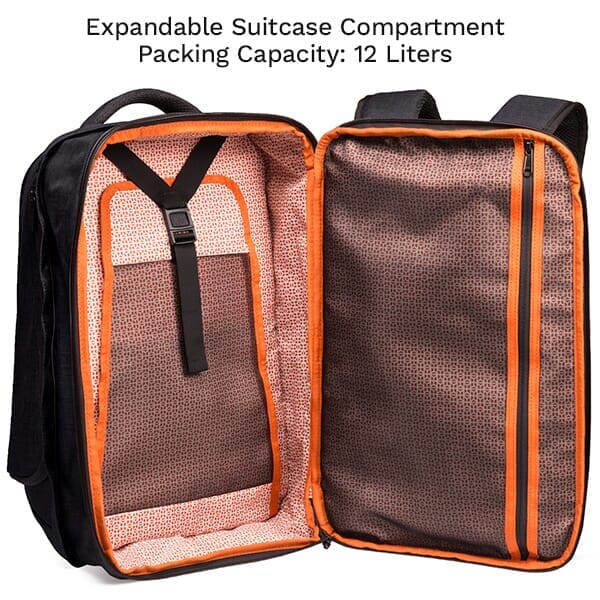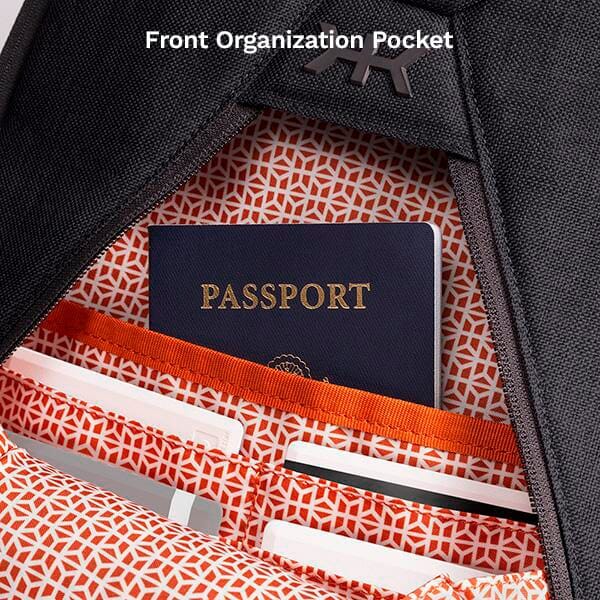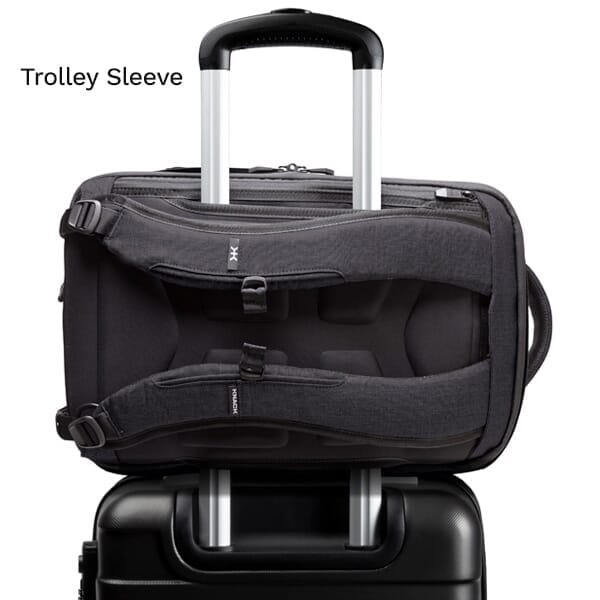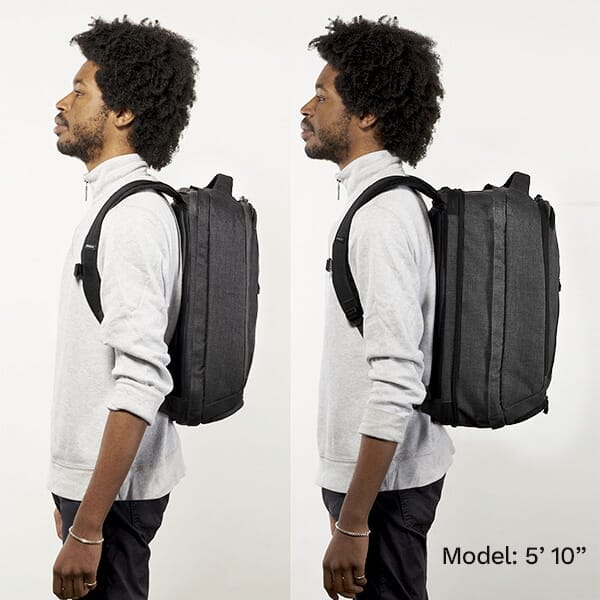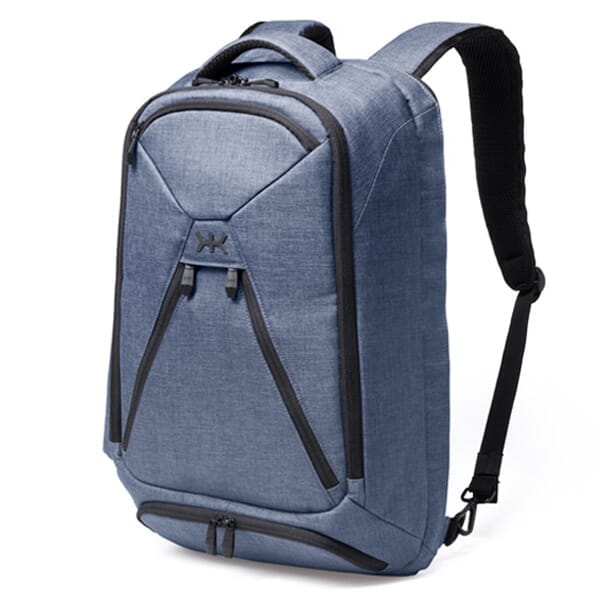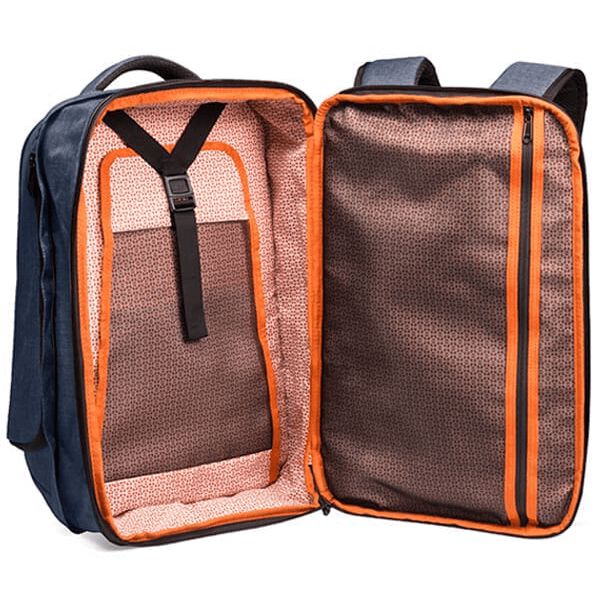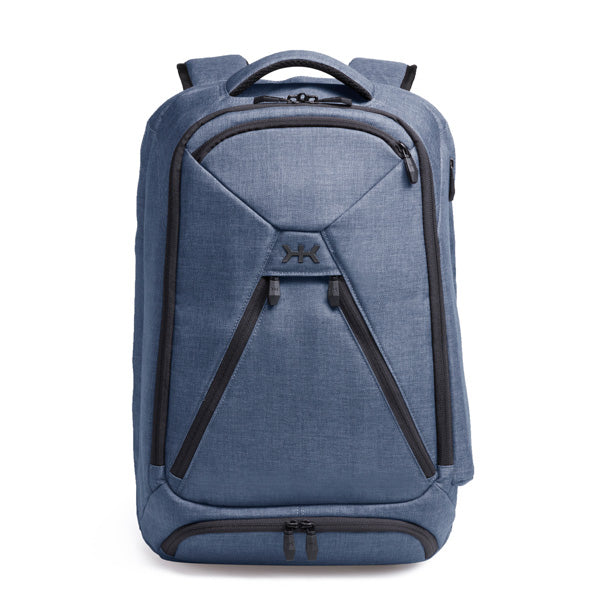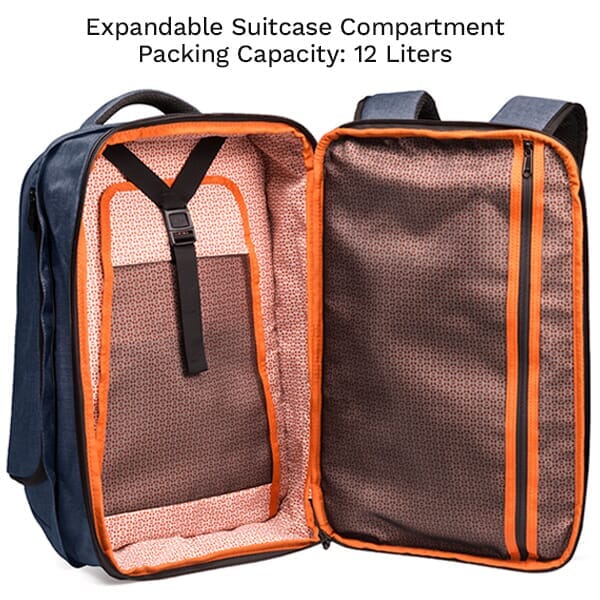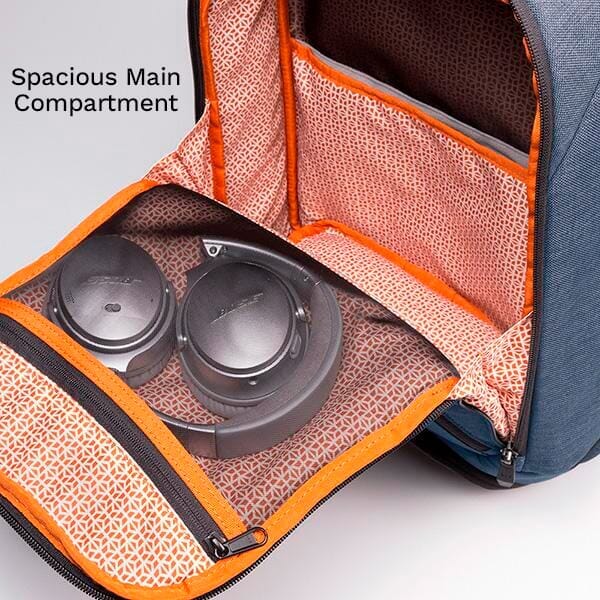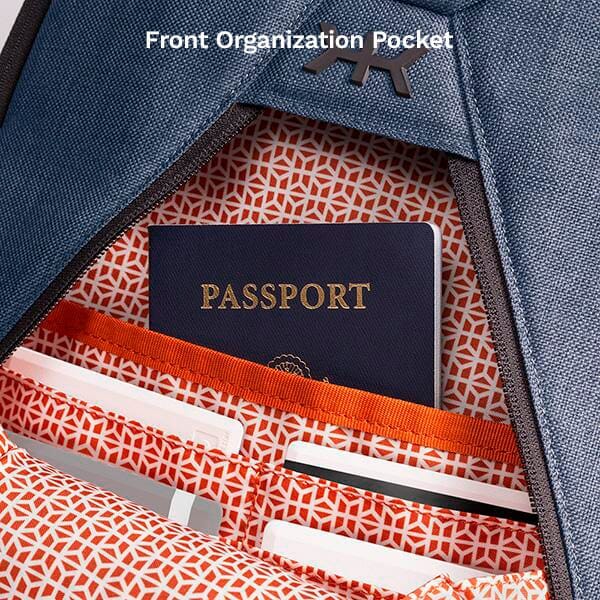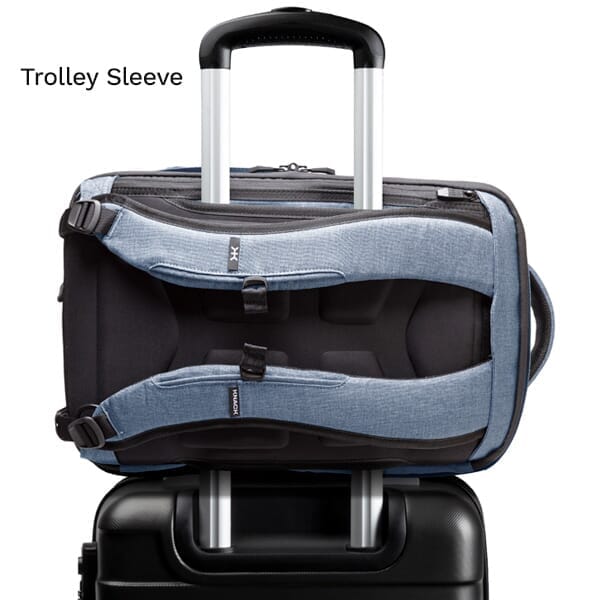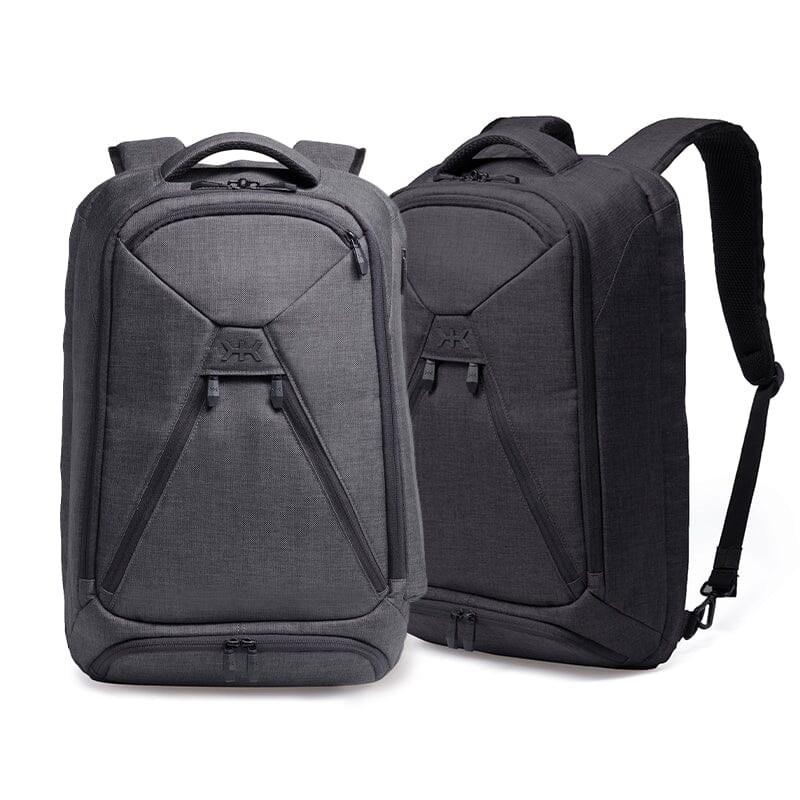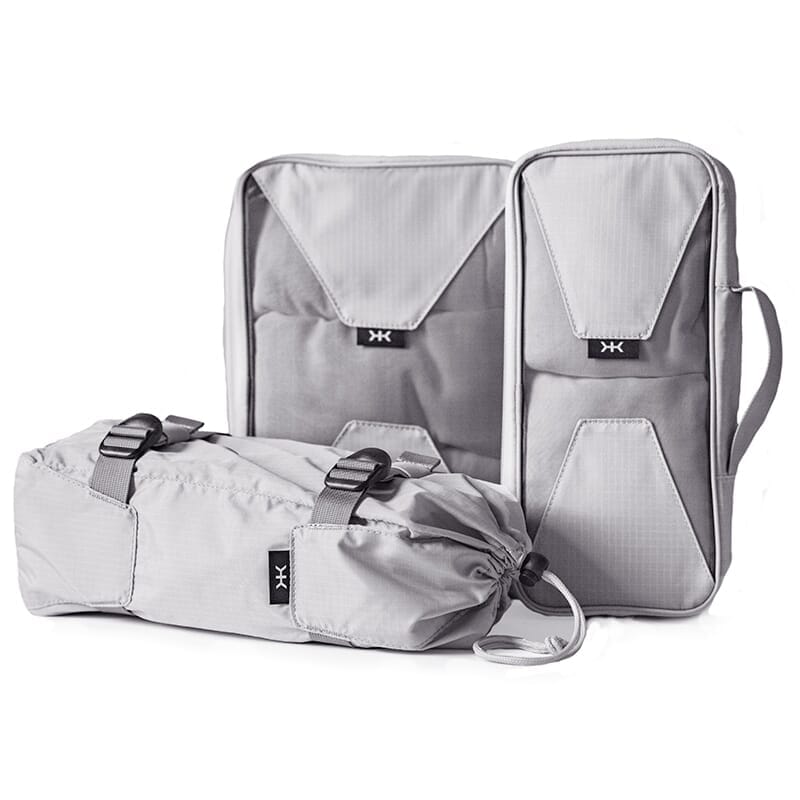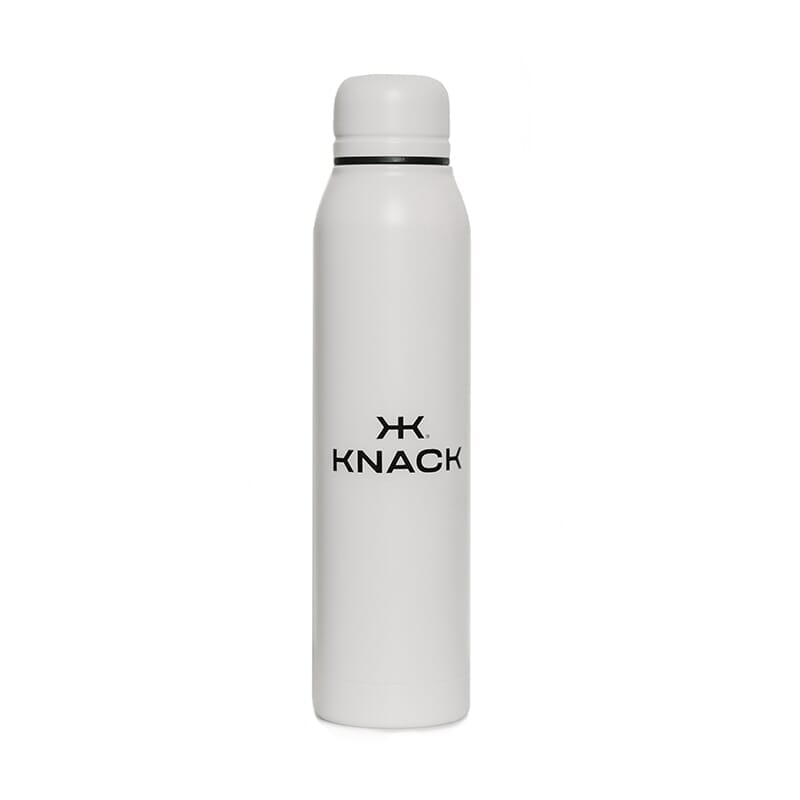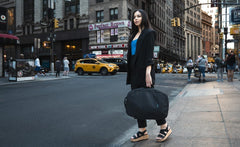Finding a great everyday carry backpack can seem like an overwhelming task. To make things easier, we’ve pulled together the top 5 things to consider when looking for your next EDC backpack.
Estimated reading time: 9 minutes |
Knack blog subscribers: 20,379 |
Take a moment and Google “backpacks I can carry every day”: there are over 68 million results! With all these choices, selecting an everyday carry (EDC) backpack may seem overwhelming. What features are “must-haves” and what features are “nice-to-haves”? Laptop protection? Pockets? Styling? RFID blocking technology? Even more pockets? It’s enough to make you bag the whole thing and pull out your old college backpack.
Don’t worry! We’ve got you covered. We’ve put together a comprehensive list of what to look for in an everyday carry backpack so you easily narrow down the 68 million options out there! But realize that ultimately your EDC backpack needs to be able to support and accentuate the life you want to live. Keep that top of mind as we delve deeper into the realm of EDC backpacks.
How to choose the best size backpack for travel:
- What is an EDC backpack?
- Size: What is the best size EDC backpack for me?
- Comfort: What makes an EDC backpack comfortable?
- Style: What are some EDC backpack style tips?
- Quality: How do I know my EDC backpack will last?
- Flexibility: How can an EDC backpack adapt to my busy day?
- Which EDC backpack do we recommend?
What is an EDC backpack?
This one is easy: an everyday carry backpack is a bag that can hold all the essentials that you need on a typical day when you leave your home. Whether you're going to work, running an errand, or seeing friends, your EDC backpack is your “always-there” companion.
And because you never fully know what the day has in store for you, your EDC backpack should also be able to accommodate unexpected changes to your schedule - whether that means going on a last-minute trip to the store or on a last-minute trip across the country.
Now that we have a common definition to work from, let’s dive in. Here are the five areas that must be considered when choosing your EDC backpack.
Size: What is the best size EDC backpack for me?
Sizing is the first criteria that you need to figure out. And, unfortunately, there is not one best size for everyone. To get at the best size for you, you need to answer two simple questions: what do you primarily need to carry every day and how large is the tech that you normally carry?
Everyday backpacks are typically measured by either their capacity (in liters) and/or by their dimensions (in inches). In general, everyday carry backpacks range between 20 and 40 liters. To imagine what that kind of capacity means, a 20 liter bag would take up the same space as 21 typically-sized quart Nalgene® water bottles and should hold a couple 2” binders, a book, a water bottle, a charger, cords and your tablet.
If you often carry your tech with you, you will also need to ensure that it fits in your everyday carry backpack. Look for dedicated laptop compartments or sleeves/pockets that are padded and protected. Unless you want your tech rattling around in the main compartment, you’ll need to ensure that the dimensions of the dedicated tech compartments and pockets fit what you carry every day.
MORE >> The best size backpack for travel
The chart below is a simple summary of typical everyday carry backpack sizes, dimensions and capacity to help you determine what is best for you.
Everyday Carry Backpack Size Guide
| Backpack |
Capacity (Liters) |
Typical Dimensions |
Best Use |
| Daypack or Small Backpack |
15 - 24 Liters | H: 16-18” W: 11-12” D: 5-7” |
Everyday adventures, carrying a tablet or laptop 13” or smaller, clothes for the gym |
| Medium Backpack |
24 - 35 Liters | H: 18-20” W: 12” D: 7-9” |
Work, carrying a 16” laptop or smaller, overnight trips of 1-2 days |
| Large Backpack | 35 - 45 Liters | H: 19-22” W: 14” D: 7-9” |
Work if you carry a lot of stuff, carrying a 16” or larger laptop, overnight trips of 3+ days. |
Comfort: What makes an EDC backpack comfortable?
You won’t use the most tricked-out EDC backpack in the world if you wear it every day and your back goes out, your shoulders ache, and your neck hurts. The following factors all play a role in the comfort of an EDC backpack:
- Weight when empty
- Design configuration
- Straps, handles and back panel construction
The first factor that drives comfort is the weight of the backpack. When loading up your backpack in the morning with your work laptop (4-5 pounds), a paperback (1 pound), your lunch (1.5 pounds), a filled quart water bottle (2 pounds) and your gym clothes (1-1.5 pounds), you really don’t want your backpack’s weight to add to the burden.
Luckily, many everyday carry backpacks are made from strong, yet lightweight, polyester and nylon fabrics with weight-saving polyoxymethylene (POM) plastic parts. So, you should look for everyday carry backpacks that are in the range of 1.5-2 pounds (20 liters) up to 3-4 pounds (40 liters) when empty.
Another key factor in comfort is backpack design configuration. Compartments meant to hold the heaviest items you carry, like your laptop or clothing, should be in the back of the bag (closest to your back). This ensures that your backpack doesn’t pull away from your shoulders and create strain while you’re carrying it. Likewise, pockets designed to carry heavier items should be at the bottom of your bag so their weight can rest more comfortably around your hips.
It goes without saying that the shoulder straps, back panel and handles of the ideal EDC backpack should be comfortable. But since it is so hard to find a good selection of backpacks to check out in brick and mortar stores, you should look for the following specs when you search online:
- The type of foam used in shoulder straps, back panels and handles. Look for closed cell foam padding (like EPE, EVA, and PE foams) which, while a bit firmer than open cell foams (like PU), has greater “bounce-back” memory and should last longer.
- Thoughtful design. Shoulder straps should be ergonomic and designed to fit the curve of your shoulders and body. They should also be easily adjustable and you may prefer that they have a sternum strap to go across your chest to keep the straps from spreading out uncomfortably under heavy loads. Back panels should be molded with air channels and be covered with materials to keep you cooler during warm days. Handles should have enough room for you to fit a gloved hand comfortable underneath them.

A final bonus tip: comfort isn’t only physical. Look for features that will also give you peace-of-mind when using your EDC backpack. Things like:
Lockable zippers on the main compartments to keep your belongings secure RFID-blocking pockets to foil credit card skimmingHidden pockets for valuables
Style: What are some EDC backpack style tips?
Your everyday carry backpack is not just a functional item to store your belongings but can also be an extension of your personality. A great way to express your individuality is by selecting a backpack in a color that complements your style. For example: if you wear a lot of dark-colored clothing, a bright-colored backpack can add a fun and unexpected element to your outfit. On the other hand, if you tend to wear a lot of light-colored clothing, a darker-colored backpack can provide a nice contrast and create a more balanced look. Ultimately, the color you choose for your everyday carry backpack should make you feel confident, comfortable, and expressive of your unique style.
Quality: How do I know my EDC backpack will last?
The old saying that you get what you pay for is particularly true in everyday carry backpacks. There is simply no getting around the fact that better quality materials and components cost more than cheaper materials. However, everyday carry backpacks that cost 2-3 times as much as cheaper alternatives are not only lighter and more comfortable, but they should give you more than 2-3 times the wear and use over their lifetime.
Start by looking at the backpack’s outer fabric. Is it abrasion-resistant (clues include being woven from high twist yarns and using bigger, higher denier yarns)? Is it water-resistant? Is it coated or treated to resist stains? If an EDC backpack is high quality, the answers should be yes, yes, and yes.
Next, see how straps and handles are attached to the body of the bag. Since EDC backpack straps carry heavy loads, they should be attached with a X box stitch:
Open the bag and look at the lining and pockets. High quality linings should be both water-resistant and treated to avoid growth of mold and mildew in case they do get damp. Are the pockets thoughtfully laid out and do at least some of them have zip closures (which last longer than Velcro® closures) so that their contents don’t fall out?
Finally check out the backpack’s hardware. Look for branded zippers (like YKK®) and plastic parts (like Duraflex®). While more expensive, these components are extensively tested and consistent from batch to batch so they won’t let you down.
Flexibility: How can an EDC backpack adapt to my busy day?
Most backpack brands make bags that do only one thing really well. For example, you can find tons of great laptop backpacks but unless you like sweaty shorts next to your computer, they don’t do a good job at carrying your gym clothes. Or how about those really stylish backpacks that can carry some work papers and your everyday things but look like the Goodyear Blimp when you pack them with a couple changes of clothes for a weekend away.
So, unless you like to have a warehouse full of bags in your closet or you actually prefer carrying a couple bags at the same time, look for an everyday carry backpack that can do a couple of different things equally well.
Some features to look for in flexible everyday carry backpacks include multiple separate compartments, expandability, and different carrying options (i.e., handle and straps). The bottom line is that you want your everyday carry backpack to adapt to you and not the other way around.
Which EDC backpack do we recommend?
Now that you have an idea of what makes a great everyday carry backpack, what’s the best one out there? We think it’s the very backpack we custom-designed expressly for this purpose! The Knack Pack checks all the boxes for a fantastic EDC backpack and lets you live a One Bag Life to boot.
Since we are a company made up of hybrid workers and passionate travelers, we built our Knack Packs to satisfy our real-world demands: intelligently laid out organization so that what we need is always at our fingertips; a padded compartment to protect our tech gear; ergonomically-designed straps that allow us to carry comfortably for days; high quality, lightweight materials that won’t let us down; and sleek design that is always appropriate.
MORE >> Independent Knack EDC backpack reviews
But the most important feature that makes a Knack Pack the perfect everyday carry backpack is its versatility. Every Knack backpack has a separate, patent-pending, suitcase compartment that is hidden away when you don’t need it and expanded when you do need it. It’s perfect for travel items, gym clothes, or any time you just need a bit more room to carry the day’s necessities.
Now that you are armed with some of the key things that make a great EDC backpack, start shopping! You’ll find that some knowledge not only makes the process easier, but also a lot of fun.
We’d love to hear your take on what to look for in a great everyday backpack or if you think we missed anything. You can reach out to us at support@knackbags.com. Also, please tag @knackbags and use #knackbags on social media when you take your Knack on your journeys!








